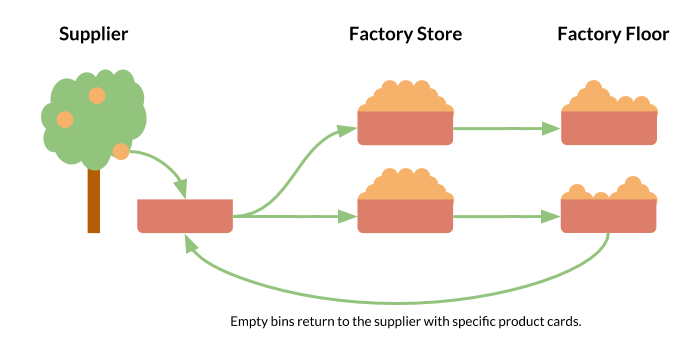5 Project Management Methodologies and Their Risks: Part 3 – Scrum and Kanban

In the first two parts, we first look at the traditional Waterfall approach, and on Agile methodology in general. This time, we will be looking at Scrum and Kanban project management.
These are actually two flavors of agile project management.
Methodology 3: Scrum Project Management
Scrum is an implementation of Agile with some additional steps. Due to its flexibility, Scrum is believed to be able to solve complex problems and deliver high quality products leveraging the team’s creativity. For implementing Scrum we have put together an awesome guide.
Scrum and How to Adopt It – the Definitive Guide
Scrum focuses and relies highly on transparency, monitoring, and adaptation. It encourages self-organizing teams, communication as means to manage tasks, and places the team responsibility on a high level.
Expectations of scrum teams include:
- Producing a product increment every sprint.
- Making frequent plans that will enable them to embrace change.
- Collaboration with stakeholders to ensure that a maximal product value is delivered.
As we can see, communication plays a key role here. This can be challenging in case of remote teams. Fortunately communicators like Slack make it much easier.
10 Tips How to Use Slack Efficiently for (not only) Remote Work
On the other hand, we mentioned we need people with extra skills. Rather intelligent people. And here comes another risk: Intelligent people prefer to communicate less. Hence the role of a Scrum Master is very important.
Risks of Scrum Project Management
As all the Agile principles and especially Scrum require skilled people, they alro require some experience with the methodology itself. Sort of a chicken egg problem.
This is why companies rarely get it right for the first time. It requires constant improvements and promoting the Scrum methodology should itself be a project driven in Scrum.
What we often see among users of Scrum is that they are overly optimistic about their tasks and forget to divide the tasks into smaller units. Of course, each unit of work introduces an administrative overhead. We are definitely not suggesting to cut the pie into very tiny bits of 30 minute long tasks for instance.
However, tasks should never leak from one sprint into another. A task that leaks into the next sprint wasted time of the previous sprint on something that is not delivered in that sprint. And thus introduces waste. Waste is what Kanban aims to prevent.
Who is Scrum best suited for?
Although originally the idea was to have Scrum for smaller teams needing flexibility in the product creation, we have seen it being used in large corporations with multiple teams involved.
It was sort of a hybrid approach where individual teams worked in Scrum and the handover was mostly Waterfall-ish. However, the planning and review meetings should be done together.
Methodology 4: Kanban Project Management
Kanban means signboard or billboard in Japanese. Taiichi Ohno from Toyota wanted to resemble a situation in supermarkets where only the goods requested by demand are ordered and stocked to improve manufacturing efficiency.
In result Kanban is both Agile and Lean methodology (Lean will be discussed in the future part of this series).
Kanban cards are a key component of Kanban and they signal the need to move materials or WIP within a production facility or to move materials from an outside supplier into the production facility.
An example of a simple Kanban project management implementation is a three-bin system. One bin is on the factory floor (the initial demand point), one bin is in the factory store (the inventory control point), and one bin is at the supplier. The bins usually have a removable card containing the product details and other relevant information, the classic kanban card.
To give you a more practical example, you can imagine the factory store as you favorite grocery store, the factory floor is their warehouse and the supplier is a farmer who sells oranges.

How does that map to the generic business delivering a product? What if we told you yet another names for the categories: supplier = To-Do, factory store = In progress, factory floor = Done. Sounds familiar?
In many implementations, companies add even more phases like Review, Idea, Won’t Do etc. There is often even a notion of grouping similar tasks. Visually, this is done by horizontal division of tasks into so called swimlanes.
Risks of Kanban Project Management
As with other methodologies, the biggest risks arise from the human factor. The first one is a risk of reduced quality. Using Agile is not a fast track ticket to skip analysis and understanding (which many teams take). Working on a task must be refrained until a full understanding of the task is not achieved.
Poor prioritization is also often seen as people want to move card quickly into the Done colument and they skip tasks that are important, not urgent and less comfortable (require more effort).
There is also a sort of lazy-ness factor risk – people simply wait for a task to be assigned to them rather to proactively take one from the To-Do column. This is a risk of most of the Agile methodologies that require a self-organising team and high degree of responsibility.
Although it might not be that obvious in project management or when working on a product that does not require such a high throughput of real materials, there is no space for hesitation and or unexpected/unwanted creativity.
Each team member is supposed to follow the process smoothly and automatically without any hesitance. Most of the states require immediate action. When there is an empty box for oranges on a grocery store shelf, it must be immediately replaced by a full one from the warehouse and the empty box immediately stocked at the place where the supplier picks it up. Maybe even reporting the state in a system by scanning the box’s bar code.
Especially the input of materials from the supplier puts very similar expectations on the supplier. Consequently, when the supplier does not want, cannot or is unable to adopt that piece of your Kanban, you are likely to be hitting issues at this point.
It is a good idea to negotiate the expectations with all the suppliers in advance.
Who is Kanban best suited for?
Like Scrum, Kanban project management better fits projects with smaller teams, who need a flexible approach to delivering a product or service. Kanban is also great for personal productivity purposes.
Scrum or Kanban?
It’s safe to say that Scrum and Kanban project management are different methodologies that appeal to different audiences. Where Scrum favors a more prescriptive process, Kanban leaves room for a more flexible workflow.
They both comply with agile principles but also have their own individual values and practices. Whichever to choose really comes down to the kind of project your team has and what type of product you wish to deliver.



